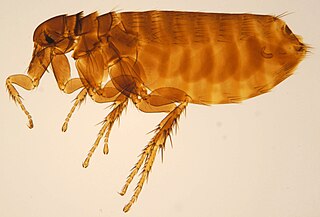
The rock dove, rock pigeon, or common pigeon is a member of the bird family Columbidae. In common usage, this bird is often simply referred to as the "pigeon".

Columba is a faint constellation designated in the late sixteenth century, remaining in official use, with its rigid limits set in the 20th century. Its name is Latin for dove. It takes up 1.31% of the southern celestial hemisphere and is just south of Canis Major and Lepus.

Alpha Columbae or α Columbae, officially named Phact, is a third magnitude star in the southern constellation of Columba. It has an apparent visual magnitude of 2.6, making it the brightest member of Columba. Based upon parallax measurements made during the Hipparcos mission, Alpha Columbae is located at a distance of around 261 light-years.

Beta Columbae, officially named Wazn, is the second brightest star in the southern constellation of Columba. It has an apparent visual magnitude of 3.1, which is bright enough to be viewed with the naked eye even from an urban location. Parallax measurements place it at a distance of about 87.2 light-years from the Sun.
Cumméne Find was the seventh abbot of Iona (657–669). He was the nephew of a previous abbot, Ségéne and great-nephew of Lasrén. It was during Cumméne's abbacy that the Northumbrians decided against adopting the Gaelic dating of Easter at the Synod of Whitby in 664, resulting in the loss of control of the Ionan offshoot Gaelic church at Lindisfarne. In 664, the last Gaelic abbot/bishop of Lindisfarne, Colmán, resigned his post and returned to Iona. It was during Cumméne's abbacy that the Book of Durrow was first produced, although this probably happened at Durrow itself, rather than Iona. Cumméne is known to have visited Ireland in 663, perhaps on a tour of daughter houses.
Adomnán or Adamnán of Iona, also known as Eunan, was an abbot of Iona Abbey (r. 679–704), hagiographer, statesman, canon jurist, and saint. He was the author of the Life of Columba, probably written between 697 and 700. This biography is by far the most important surviving work written in early-medieval Scotland, and is a vital source for our knowledge of the Picts, and an insight into the life of Iona and the early-medieval Gaelic monk.

Mu Columbae is a star in the constellation of Columba. It is one of the few O-class stars that are visible to the unaided eye. The star is known to lie approximately 1,300 light years from the Solar System.
Theta Columbae, also named Elkurud, is a solitary star in the southern constellation of Columba. It is faintly visible to the naked eye, having an apparent visual magnitude of 5.02. Based upon parallax measurements taken during the Hipparcos mission, it is roughly 720 light-years distant from the Sun. At its present distance, the visual magnitude of the star is reduced by an interstellar extinction factor of 0.11. It is currently moving away from the Sun with a radial velocity of 45.3 km/s. The star made its closest approach about 4.7 million years ago when it underwent perihelion passage at a distance of 10.9 ly (3.33 pc).
Kappa Columbae, Latinized from κ Columbae, is a solitary star in the southern constellation of Columba. It has an apparent visual magnitude of 4.37, which is bright enough to be seen with the naked eye. Based upon an annual parallax shift of 17.87 mas, it is located at a distance of 183 light years from the Sun. It has a peculiar velocity of 20.2±1.9 km/s, making it a candidate runaway star.
Lambda Columbae, Latinized from λ Columbae, is a probable binary star in the southern constellation of Columba. With an apparent visual magnitude of 4.86, it is faintly visible to the naked eye. The measured annual parallax shift of 9.75 mas yields an estimated distance of roughly 335 light years.

Pseudolynchia canariensis, the pigeon louse fly or pigeon fly, is a species of biting fly in the family of louse flies, Hippoboscidae.
Baithéne mac Brénaind was an Irish monk, one of Saint Columba's followers who accompanied him to Scotland around 563, and was the first successor of the abbacy of Iona. The Annals of Tigernach record his birth in 534, and his death was likely between 596-598 according also to the Annals of Ulster. Irish genealogical records indicate him to be the "son of Brendan, son of Fergus, son of Conall Gulban, son of Niall Noígiallach", thus being a member of the Cenél Conaill branch of the Northern Uí Néill, as the abbots of Iona following the death of Columba often were.

Isopogon ceratophyllus, commonly known as the horny cone-bush or wild Irishman, is a plant of the family Proteaceae that is endemic to the coast in Victoria, South Australia and on the Furneaux Group of islands in Tasmania. It is a small woody shrub that grows to 100 cm high with prickly foliage. It is extremely sensitive to dieback from the pathogen Phytophthora cinnamomi

Ceratophyllus gallinae, known as the hen flea in Europe or the European chicken flea elsewhere, is an ectoparasite of birds. This flea was first described by the German botanist and entomologist Franz von Paula Schrank in 1803.
AP Columbae, also known as AP Col, is a pre-main-sequence star in the constellation of Columba, which has been studied for the last 15 years, but was recently discovered to be very young and close to Earth. It has been recognized as the closest young star to the Earth.
The Bayer designation Nu Columbae is shared by two stars, in the constellation Columba:
The Bayer designation Pi Columbae (π Col / π Columbae) may refer to either the star or star system in the constellation Columba:

Ceratophyllus is a widespread genus of fleas found in temperate climates. Some of its members include the chicken flea, Ceratophyllus gallinae, and the poultry flea, Ceratophyllus niger.
Ceratophyllus phrillinae is a species of flea in the family Ceratophyllidae. It was described by Smit in 1976.






